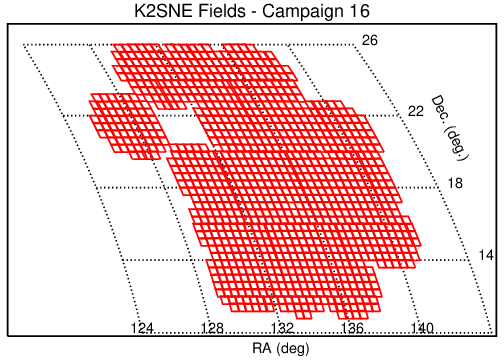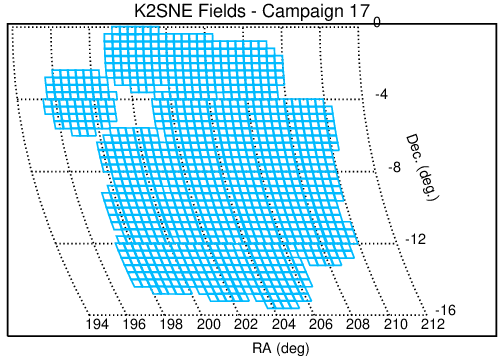The Panoramic Survey Telescope and Rapid Response System (Pan-STARRS) observed the K2 Campaign 16 and 17 fields contemporaneously from the ground with its wide field imager. All the images from these Pan-STARRS data are available as a new High Level Science Product at the Mikulski Archive for Space Telescopes (MAST). The Pan-STARRS data include sparse griz time-series photometry of the entire 115 square degree K2 field of view, acquired in 7 square degree mosaics. The number of time samples ranges from about 4 to 35, depending on the band and campaign, spaced over the approximately 80 day campaigns. K2 Project Scientist Jessie Dotson and collaborators have also published a new AAS Research Note describing the motivation for contemporaneous observations, date ranges, per-band photometric cadences, and field center positions.
The observations have already been useful for identifying and characterizing transient phenomena such as supernovae. The C16 field also includes the star clusters M44 and M67, for which polychromatic photometry can assess stellar activity and starspot physical properties for example. The imaging data is available from the HLSP webpage at MAST, which also provides an image cutout tool for extracting user-defined thumbnail images, and an example Jupyter notebook which shows how the data can be accessed programmatically using the Application Programming Interface (API).

